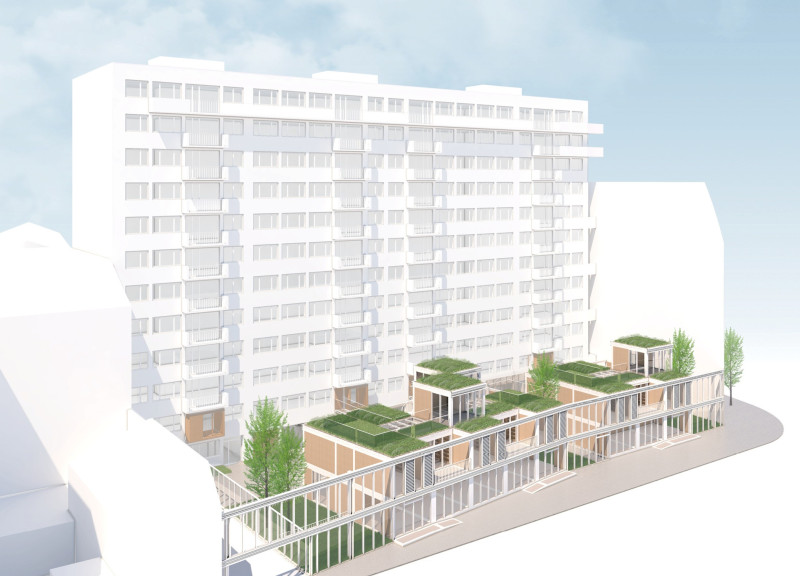5 key facts about this project
The design addresses the housing shortage in Paris by incorporating prefabricated structures into existing urban areas. It focuses on utilizing spaces that are often overlooked or underused. The project aims to provide modern living solutions while respecting the city’s historical character. The integration of new structures alongside traditional architecture fosters a harmonious interaction between different building styles.
Facade Design
The design features a modern facade with extensive glass elements that allow ample natural light. This choice of materials encourages a visual connection between the interior and the street. The transparency of the facade adds to the lively atmosphere of the neighborhood. By blending contemporary and traditional aspects, the project maintains a dialogue with its surroundings.
Community-Centric Spaces
Ground-level areas serve as amenity spaces, including private gardens and shared communal spots. These spaces promote social interactions among residents and enhance the overall livability of the buildings. The layout connects these areas directly to living spaces, allowing for fluid movement between private and communal realms. This design encourages residents to engage with one another and create a strong sense of community.
Upper Floor Utilization
The upper floors of the buildings are designed as terraces and gardens, providing additional outdoor space for residents. These areas contribute essential greenery to the compact urban environment, offering opportunities for relaxation and connection to nature. This design choice not only maximizes the building’s height but also improves the overall quality of life for those living in the area.
Prefabricated construction techniques are employed to streamline the building process. This approach allows for flexibility in adapting to site constraints. It ensures the new units blend effectively with the existing structures. The attention to detail includes landscaped terraces with planters, adding softness to the urban silhouette while promoting sustainable living practices within the community.





















































